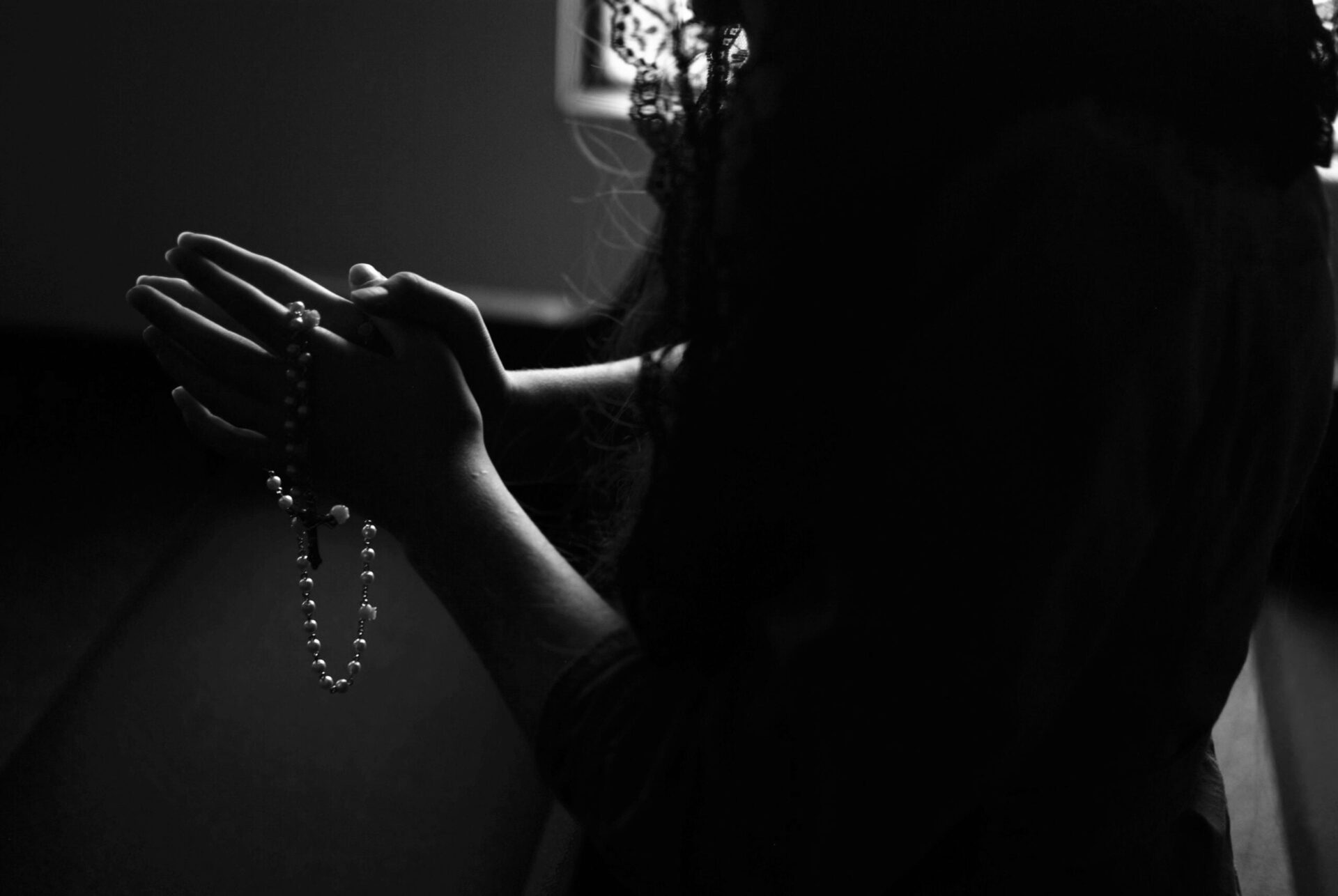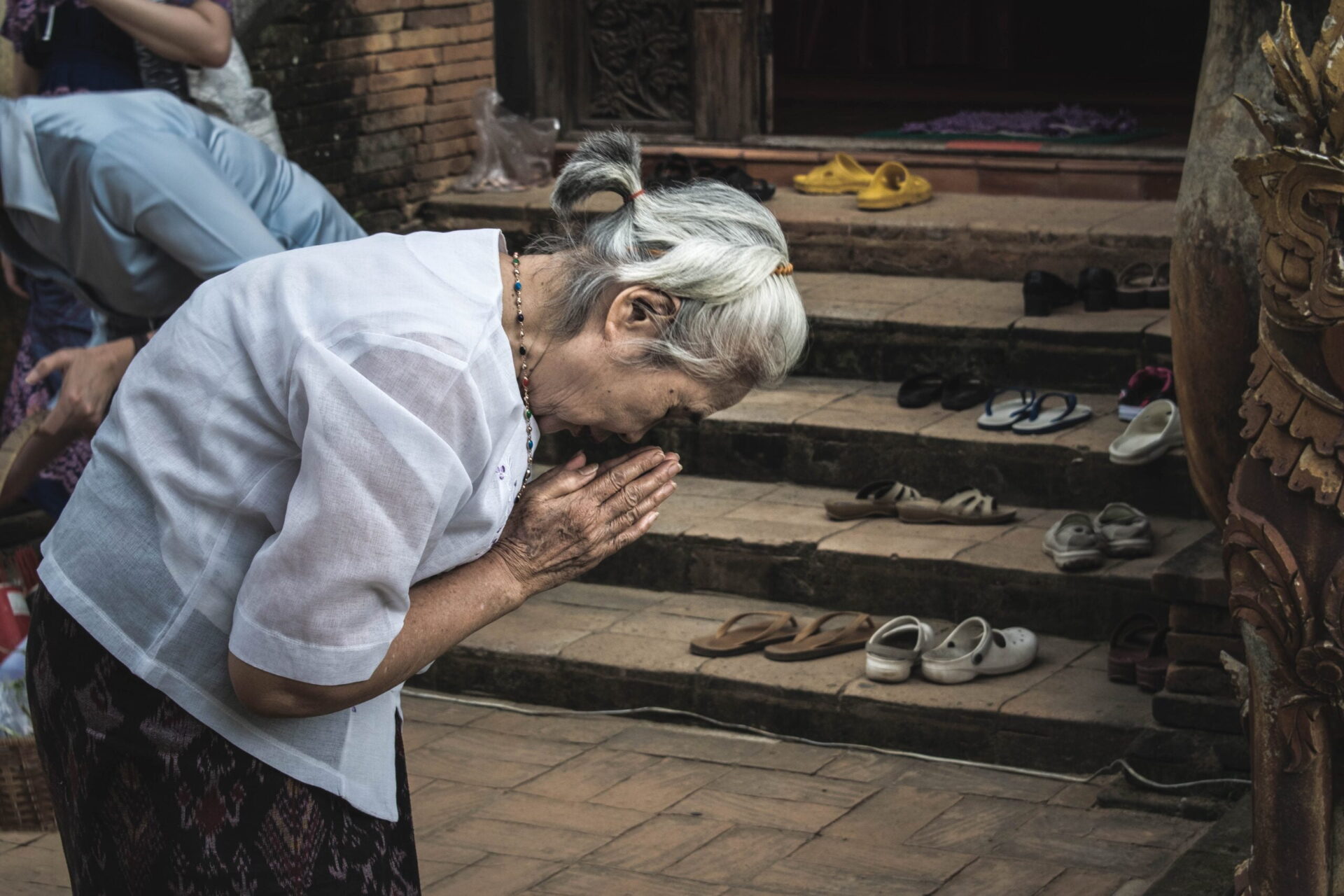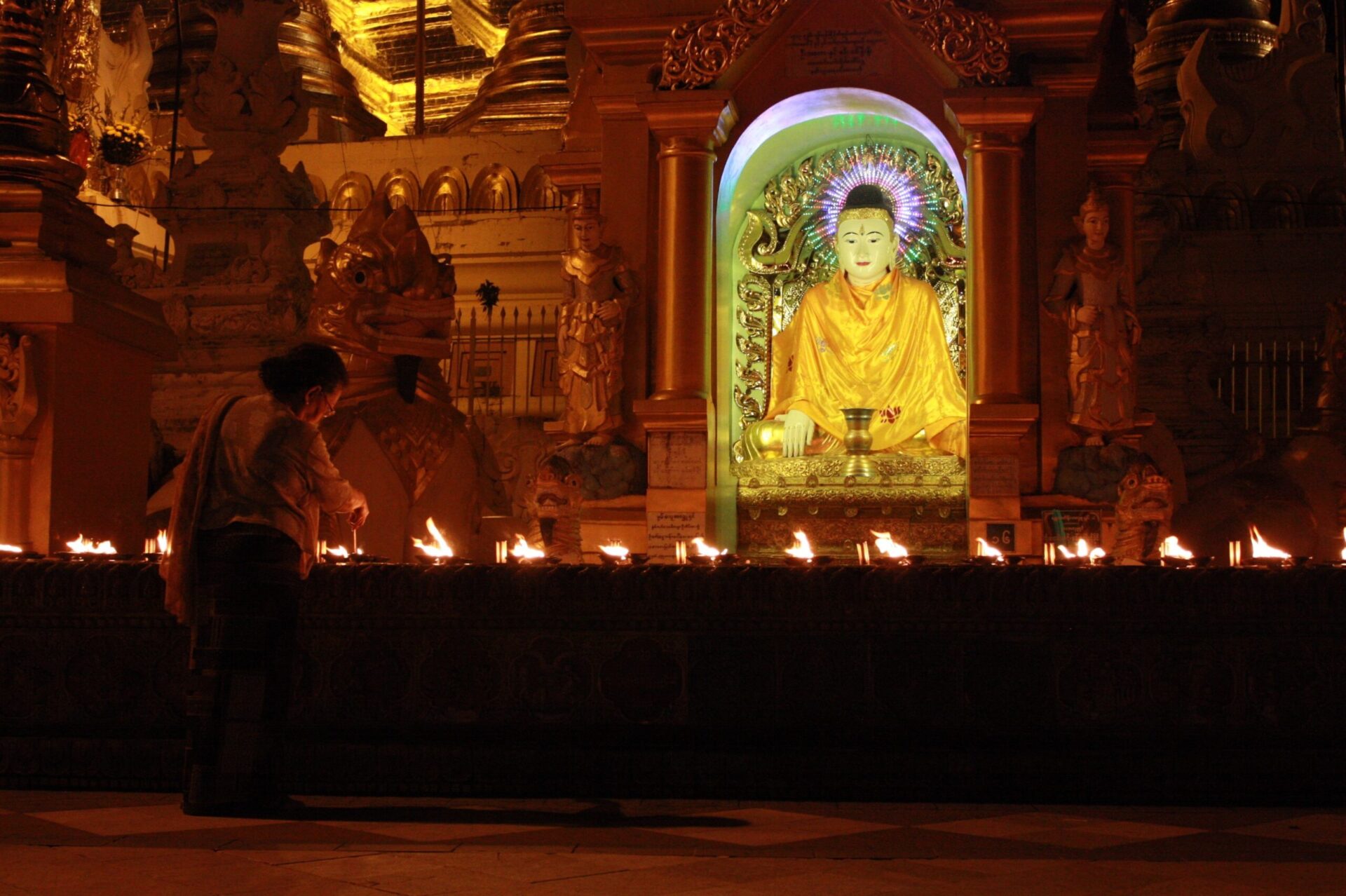Have you ever wondered about the main deity of the Hindu religion? Hinduism, with its rich and diverse pantheon, encompasses a multitude of gods and goddesses. However, one god stands out as the central focus of worship and devotion. In this article, we explore the identity of the main Hindu god, shedding light on the significance and symbolism associated with this revered figure. Join us on this enlightening journey to delve into the heart of Hinduism and discover the embodiment of divine power.
Table of Contents
Understanding the Structure of Hindu Deities
Why there is no one main god in Hinduism
In Hinduism, unlike many other religions, there is no singular main god that is worshiped by all followers. This is because Hinduism embraces a rich and diverse pantheon of deities, each representing different aspects of the divine. The abundance of gods in Hinduism can be attributed to the belief that the ultimate reality, known as Brahman, is an all-encompassing cosmic force that transcends the limits of human understanding. Hinduism recognizes that this ultimate reality can manifest in various forms and aspects, each of which represents different attributes and energies that contribute to the functioning of the universe.
The concept of Brahman
At the core of Hindu philosophy lies the concept of Brahman. Brahman is often described as the absolute reality, the supreme cosmic power, and the source of all existence. It is an abstract and formless entity that cannot be fully comprehended by human beings. The Upanishads, ancient Hindu scriptures, describe Brahman as being beyond dualities and limitations, encompassing both the manifest and unmanifest aspects of reality. Hinduism acknowledges that human understanding is limited and that Brahman cannot be confined to a single physical form or entity.
Principle of Polytheism in Hinduism
Hinduism embraces a principle of polytheism, which allows for the worship of multiple gods and goddesses. This does not mean that Hindus believe in the existence of separate and independent deities. Instead, it reflects their recognition and reverence for the diverse manifestations of the divine within the universe. Each deity represents a specific aspect of Brahman’s energy or power and is honored for their role in maintaining the cosmic order. This inclusive approach facilitates a deep spiritual connection for individuals, as they can relate to different deities based on their personal needs, aspirations, and circumstances.
Overview of the Hindu Trinity
Description of Hindu Trinity
The Hindu Trinity, often referred to as Trimurti, consists of three major deities: Brahma, Vishnu, and Shiva. They are the principal gods in Hinduism and are considered to be the cosmic forces responsible for the creation, preservation, and destruction of the universe. Brahma represents the creative aspect, Vishnu embodies the preserver, and Shiva symbolizes the destroyer. The Trinity represents the cyclical nature of existence, where creation leads to preservation, and preservation eventually paves the way for destruction, leading to new creation.
Importance of Trinity in Hinduism
The Hindu Trinity plays a crucial role in maintaining the balance and harmony of the cosmos. Each deity in the Trinity has a specific sphere of influence and is responsible for upholding a particular aspect of the universe. Brahma, as the creator, lays the foundation for life and the physical realm. Vishnu, as the preserver, ensures the continuity and sustenance of life. Shiva, as the destroyer, brings about necessary transformations and renewal. The interconnectedness of these three deities highlights the cyclical nature of existence and teaches individuals to embrace the changes and transitions in their own lives.

Brahma: The Creator God
Role of Brahma in the cosmos
Brahma, as the creator god in Hinduism, is responsible for the creation of the universe and all living beings within it. Although he is considered the creator, his role in ongoing cosmic affairs is relatively limited compared to the other deities. It is believed that Brahma, after creating the universe, primarily focuses on preserving the cosmic order and allowing other deities to govern the intricate details of life and existence.
Popular stories associated with Brahma
Brahma is associated with various myths and legends in Hindu mythology. One popular story revolves around the creation of the universe through the manifestation of Brahma from a golden lotus emerging from the naval of Lord Vishnu. Another well-known tale tells of Brahma’s five heads, each representing a different aspect of knowledge and wisdom. However, due to his ego and pride, one of his heads was cut off by Lord Shiva, leading to Brahma’s reduced prominence in Hindu worship.
Worship and Temples of Brahma
Although Brahma is one of the major deities in Hinduism, temples dedicated solely to his worship are quite rare. One notable exception is the Brahma Temple in Pushkar, Rajasthan, India. It is believed to be the only temple where Brahma is worshiped as the primary deity. Devotees flock to this temple to seek Brahma’s blessings and offer prayers for their well-being and prosperity. Despite his limited number of temples, Brahma is still venerated alongside other deities in various Hindu rituals and festivals.
Vishnu: The Preserver God
Significance of Vishnu in Hinduism
Vishnu is revered as the preserver and protector of the universe in Hinduism. He is believed to assume various forms, known as avatars, to restore cosmic balance and vanquish evil forces that threaten the world. Vishnu symbolizes the principles of righteousness, compassion, and justice. Through his avatars, he provides guidance and support to humanity in times of need, ensuring the preservation of dharma (righteousness) and order in the universe.
Vishnu’s avatars
Vishnu’s avatars, such as Lord Rama and Lord Krishna, are highly venerated and celebrated in Hindu mythology. Lord Rama is revered for his unwavering devotion to dharma and his quest to rescue his wife, Sita, from the clutches of the demon king, Ravana. Lord Krishna, on the other hand, is known for his mischievous and playful nature, as depicted in the epic Mahabharata. Through their heroic deeds and divine teachings, Vishnu’s avatars continue to inspire countless devotees and serve as role models for moral and ethical living.
Depictions and symbols associated with Vishnu
Vishnu is often depicted with a serene and calming presence, usually resting on the mythical serpent, Shesha, in his cosmic abode. He is commonly portrayed with four arms, holding various symbols that represent his divine attributes. The conch shell (shankha) symbolizes the sound of creation and the call to spiritual awakening. The discus (chakra) represents the cosmic order and the power to destroy evil forces. The lotus flower (padma) symbolizes purity and beauty, while the mace (gada) represents strength. These iconic representations are seen in temples and artworks dedicated to Vishnu, where devotees offer their prayers and seek his blessings.

Shiva: The Destroyer God
Role of Shiva in Hinduism
Shiva, also known as Mahadeva or the Great God, is one of the most prominent deities in Hinduism. He embodies the powers of destruction, transformation, and regeneration. Despite the seemingly negative nature of his responsibilities, Shiva’s actions are regarded as necessary for the continuation of life and the creation of new possibilities. Shiva’s presence in Hinduism emphasizes the impermanence and cyclical nature of existence, reminding individuals of the need to let go and embrace change.
Legends and tales about Shiva
Shiva is associated with numerous legends and tales that highlight his complex and multifaceted nature. One famous story recounts the marriage of Shiva to the goddess Parvati, symbolizing the union of the divine masculine and feminine energies. Another popular myth revolves around the role of Shiva in consuming the poison known as Halahala during the churning of the cosmic ocean, in order to save the universe from its destructive effects. These stories and more contribute to the rich tapestry of Shiva’s mythology and inspire devotees to see beyond the apparent dichotomy between creation and destruction.
Perception of Shiva in different Hindu Sects
Shiva is venerated and worshiped across various Hindu sects, each emphasizing different aspects of his role and characteristics. In Shaivism, which primarily worships Shiva, he is revered as the supreme being and the center of devotion. His devotees perceive him as the ultimate source of spiritual liberation and enlightenment. In contrast, in the Shakta tradition, which focuses on the worship of the divine feminine energy, Shiva represents the masculine aspect of energy and exists in union with the goddess Shakti. These different perspectives on Shiva reveal the diversity of beliefs within Hinduism and the multifaceted nature of the divine.
Divine Feminine Power: Shakti
Understanding the concept of Shakti in Hinduism
Shakti is the divine feminine power and energy that permeates the entire universe. It represents the active, creative and transformative aspects within the divine cosmic realm. Shakti is considered the primordial energy that both the male and female deities embody and emanate. Hinduism recognizes the importance of balance, acknowledging that the divine cannot be fully understood or experienced without the inclusion of both masculine and feminine energies.
Forms and manifestations of Shakti
Shakti manifests in various forms and goddesses, each representing different facets of femininity and power. Devi, the general term for goddess in Hinduism, encompasses a wide range of incarnations, including Durga, Kali, Lakshmi, Saraswati, and Parvati. Durga is known for her fierce and protective nature, while Kali embodies the transformative and destructive aspects of Shakti. Lakshmi represents abundance, wealth, and prosperity, while Saraswati symbolizes knowledge, arts, and learning. Parvati is the gentle and nurturing aspect of the divine feminine.
Significance of Shakti worship in Hindu society
The worship of Shakti holds immense significance in Hindu society. It celebrates the power and influence of women and recognizes their vital role in creation, preservation, and transformation. Shakti worship empowers individuals, especially women, to embrace their innate strength and divinity. It encourages the nurturing of talents, skills, and wisdom, fostering personal growth and spiritual evolution. The reverence for Shakti extends beyond religious rituals as her presence is also visible in cultural practices, art, and the empowerment of women in society.

Ganesha: The God of Beginnings
Story of Ganesha’s birth
Ganesha, also known as Ganapati or Vinayaka, is one of the most widely worshiped Hindu deities. The story of Ganesha’s birth is one of the most beloved and well-known myths in Hindu mythology. It is believed that Goddess Parvati, the wife of Lord Shiva, created Ganesha from the dirt and oils of her own body while preparing for a bath. She gave him life and tasked him with guarding the entrance while she bathed. When Shiva returned home, Ganesha refused to let him enter, as instructed by his mother. This led to a fierce battle between Shiva and Ganesha, which ended with Ganesha’s head being severed. In remorse, Shiva replaced Ganesha’s head with that of an elephant, elevating him to a divine status.
Symbolism associated with Ganesha
Ganesha is highly recognized for his unique appearance, with the head of an elephant and a rotund body. This distinctive form carries rich symbolism within Hinduism. The elephant head represents wisdom, intelligence, and the ability to overcome obstacles. Ganesha’s large ears symbolize listening and receptivity, while his small eyes signify concentration and attention to detail. His trunk indicates adaptability and the capability to discern between good and evil. The broken tusk held in one of his hands symbolizes sacrifice and the prioritization of inner truth over external appearances.
Significance of Ganesha in Hindu ceremonies and festivals
Ganesha is considered the harbinger of good luck, wisdom, and success. His presence is invoked at the beginning of any new endeavor, ceremony, or festival to remove obstacles and ensure a smooth and auspicious beginning. Devotees offer prayers and seek Ganesha’s blessings before embarking on important life events or undergoing significant changes. Ganesh Chaturthi, a prominent Hindu festival dedicated to Ganesha, is celebrated with fervor and devotion across India. It involves the installation of Ganesha idols in homes and communities, followed by vibrant processions, music, dance, and feasting.
Krishna and Rama: Avatar of Vishnu
Role and importance of Krishna in Hinduism
Krishna, often referred to as Lord Krishna, is considered one of the most beloved and revered deities in Hinduism. He is seen as the eighth avatar or incarnation of Lord Vishnu and is celebrated for his teachings, divine interventions, and playful nature. Krishna is depicted as the epitome of love, compassion, and devotion. His teachings, prominently featured in the Bhagavad Gita, offer spiritual guidance and insights on moral dilemmas and the path to spiritual enlightenment. Krishna’s presence in mythology and his divine charm continue to captivate devotees, inspiring a deep and personal connection.
Rama’s significance in Hindu epic Ramayana
Rama, the central protagonist of the epic Ramayana, is another significant avatar of Lord Vishnu. He is revered for his righteous and honorable character, serving as a role model for individuals striving to live a virtuous life. The epic tells the story of Rama’s journey to rescue his wife, Sita, from the demon king, Ravana. Rama’s unwavering devotion to duty, justice, and loyalty, as well as his triumph over evil, have made him an embodiment of righteousness and morality in Hinduism.
Cultural and societal impact of Krishna and Rama’s Stories
The stories of Krishna and Rama have had a profound impact on Indian culture and society. These divine tales, encompassing myth, history, and moral lessons, have been passed down for centuries through scripture, literature, art, and dance. The celebration of Krishna’s birth, known as Krishna Janmashtami, and Rama’s return to Ayodhya, known as Diwali, are celebrated with immense joy and enthusiasm throughout the country. These festivals transcend religious boundaries and serve as unifying occasions that bring communities together, promoting the values of love, righteousness, and devotion.
Notable Lesser Known Hindu Gods
Introduction to lesser known Hindu gods
While Brahma, Vishnu, Shiva, and their respective avatars are widely worshipped in Hinduism, there are numerous lesser-known gods and goddesses with significant roles and prominence within the religion. Some of these deities include Ganesha’s brother, Kartikeya, the god of war and divine commander-in-chief. Another lesser-known deity is Hanuman, a devoted and superhuman monkey-like humanoid, revered for his unwavering service and loyalty to Lord Rama. These gods and many others, though not as widely recognized, play essential roles in specific contexts and regions within Hindu worship and rituals.
Their roles and importance in Hinduism
The lesser-known gods and goddesses in Hinduism often represent specific aspects of life, nature, or cosmic phenomena. For example, Agni, the fire god, embodies the sacred fire element and is worshipped during spiritual ceremonies and rituals. Saraswati, the goddess of knowledge, arts, and learning, is revered by students, scholars, and artists seeking her blessings for wisdom and creativity. These lesser-known deities highlight the multifaceted nature of Hinduism and the recognition of diverse divine energies at play in the universe.
Regions where they are prominently worshipped
The prominence of lesser-known gods and goddesses can vary greatly across different regions and traditions within Hinduism. For instance, in South India, Murugan, another name for Kartikeya, is widely worshipped, particularly in the state of Tamil Nadu. Hanuman’s worship is also prevalent in various parts of India, with dedicated temples and shrines dedicated to him. Regional variations and cultural nuances influence the popularity and significance of specific deities, making them more prominent in certain geographical areas or communities.
The Depiction of Gods in Hindu Art
Role of art and iconography in Hinduism
Art and iconography hold immense importance in the practice of Hinduism, providing a visual representation of the divine and aiding devotees in their spiritual journey. Hindu art serves as a medium through which individuals can connect with the gods and immerse themselves in the stories and myths associated with them. Whether through sculpture, paintings, or intricate temple carvings, the portrayal of gods in various art forms allows devotees to experience a sense of awe, reverence, and devotion.
Common themes and symbols in depictions of Hindu gods
The depiction of Hindu gods often incorporates recurring themes and symbols that hold specific meanings and significance. For example, the lotus flower is a common symbol associated with Lakshmi, representing purity, beauty, and divine grace. The multiple arms of deities, such as Durga and Vishnu, symbolize their ability to act in various realms simultaneously and embody multiple roles and powers. Each god’s vehicle or vahana, such as the bull Nandi for Shiva, the peacock for Murugan, or the owl for Lakshmi, represents a close companion that aids the respective deity and carries deeper symbolism within Hindu mythology.
Impact of historical and cultural context on depictions
Depictions of Hindu gods have changed and evolved over time, influenced by the historical, cultural, and artistic traditions of different regions. The choice of materials, styles, and techniques used in creating artistic representations of gods varies across different periods and geographical locations. For instance, ancient temple sculptures in South India often feature intricate details and elaborate compositions, while contemporary paintings and digital art may adopt more modern and abstract styles. Nevertheless, regardless of the style or period, the aim of Hindu art remains constant – to inspire devotion, communicate divine stories, and facilitate spiritual connection between individuals and the gods.
In conclusion, Hinduism showcases a diverse pantheon of deities, each representing different aspects of the divine. There is no single main god in Hinduism, as the religion recognizes the vast and incomprehensible nature of Brahman, the ultimate reality. The Hindu Trinity, consisting of Brahma, Vishnu, and Shiva, forms the foundation of the pantheon, representing the cosmic forces responsible for creation, preservation, and destruction. Each deity is significant and venerated in their own right, with unique stories, symbols, and worship practices associated with them. The lesser-known gods, such as Kartikeya and Hanuman, have their own roles and prominence in specific regions. The depiction of gods in Hindu art plays a crucial role in enabling devotees to connect with the divine and immerse themselves in the rich mythology and teachings of the religion. Overall, Hinduism’s structure and diverse pantheon of deities provide a multitude of avenues for devotees to explore and cultivate their spiritual beliefs and connections.